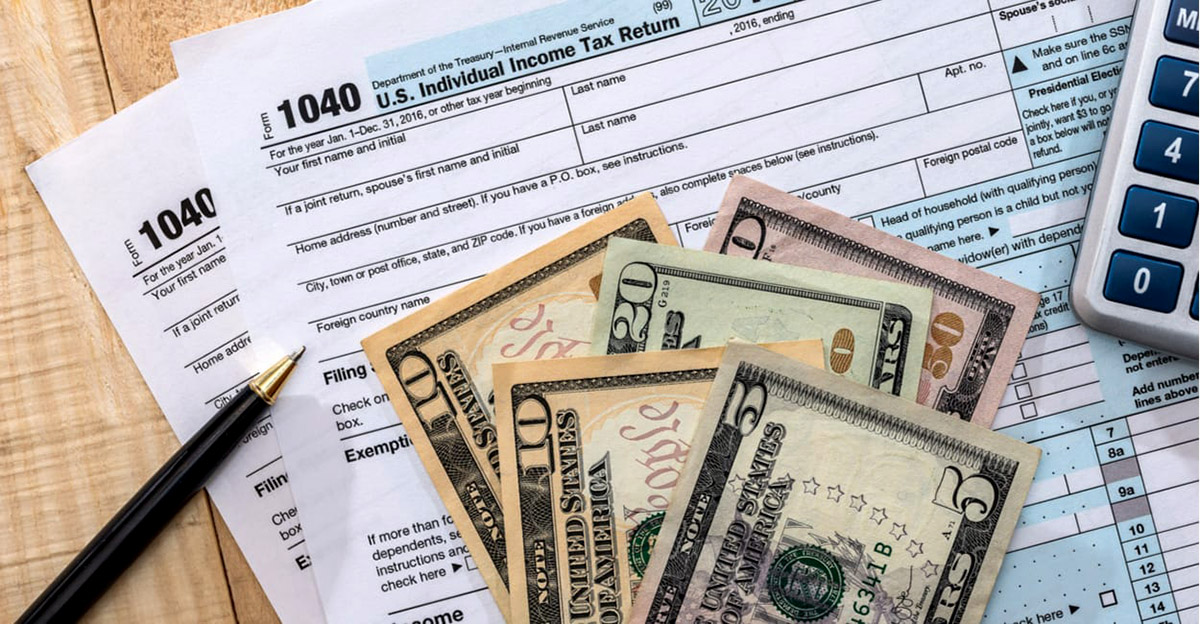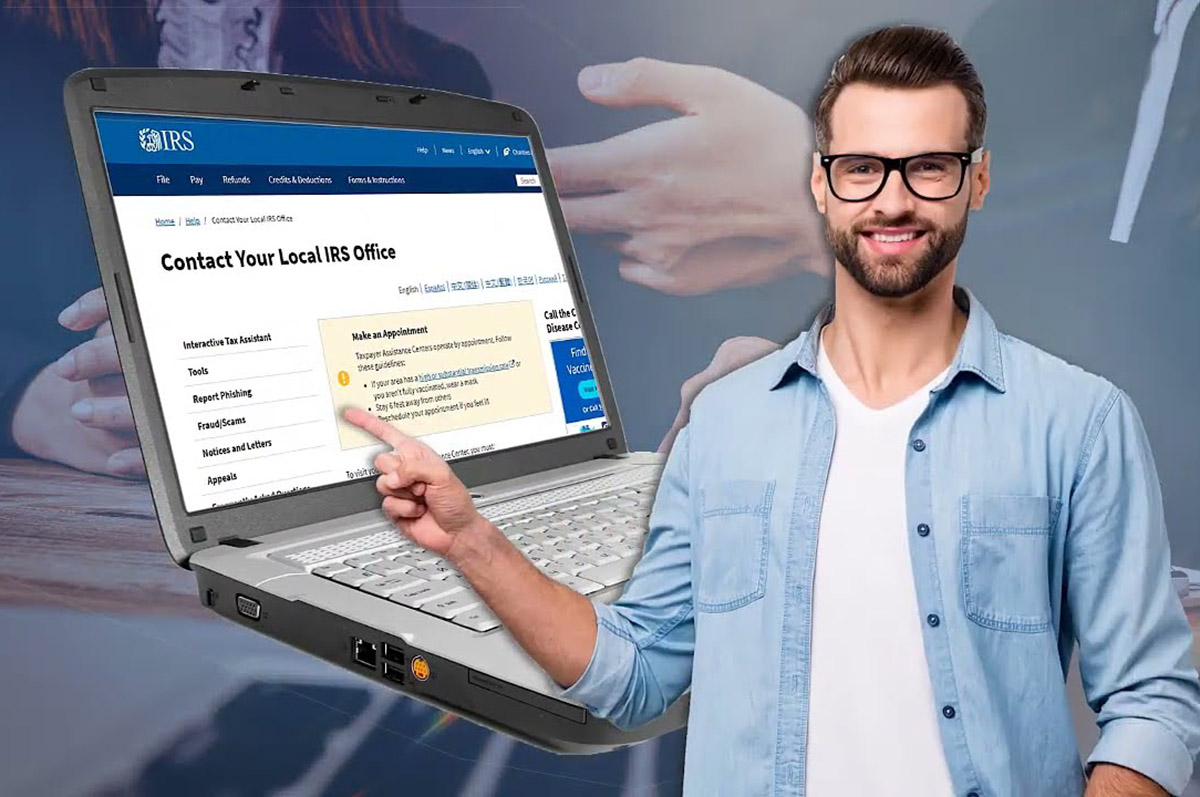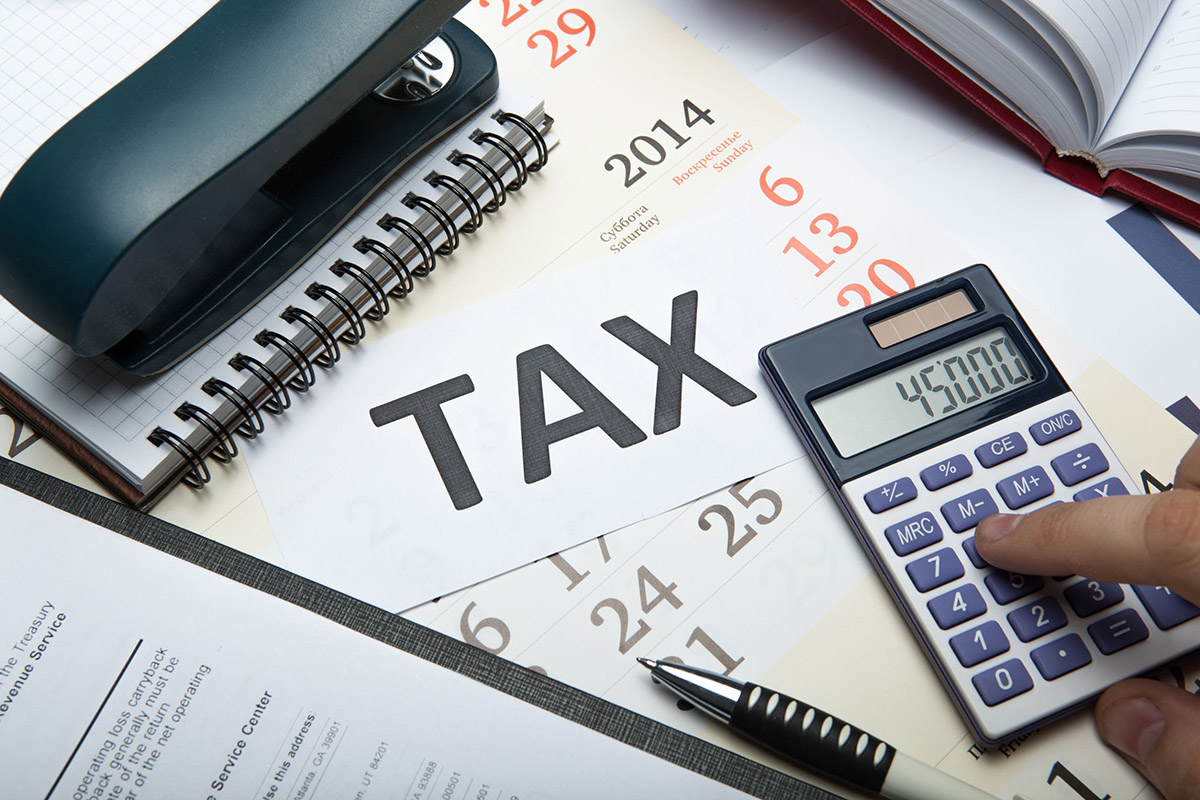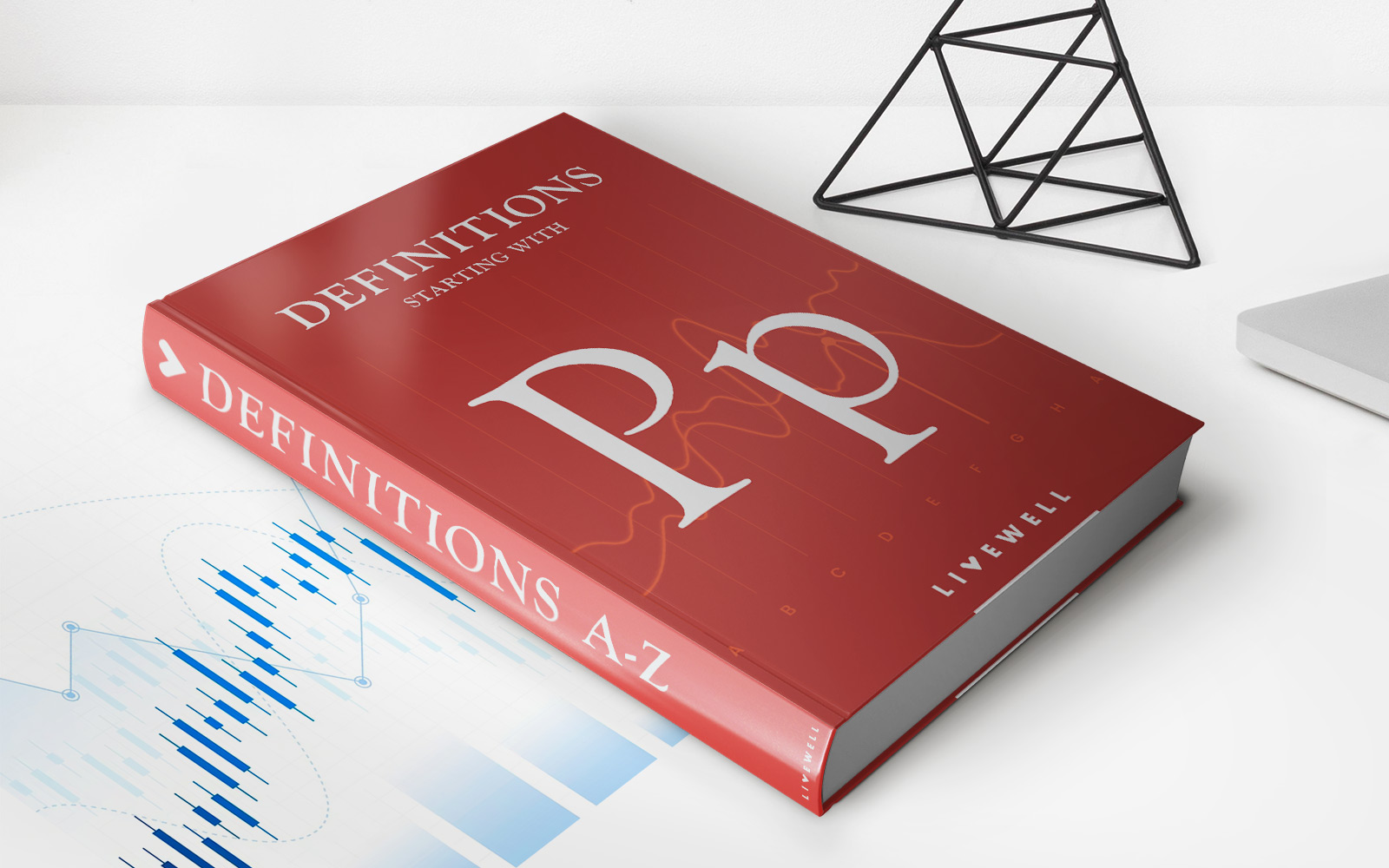

Finance
How Do You Get A Copy Of Your Tax Return?
Published: October 29, 2023
Looking to get a copy of your tax return? Learn the steps involved and how to obtain your tax documents easily. Find out more on finance
(Many of the links in this article redirect to a specific reviewed product. Your purchase of these products through affiliate links helps to generate commission for LiveWell, at no extra cost. Learn more)
Table of Contents
- Introduction
- Why Do You Need a Copy of Your Tax Return?
- How to Request a Copy of Your Tax Return
- Option 1: Online Request
- Option 2: Mail-in Request
- Option 3: Obtaining a Transcript
- Option 4: Contacting Your Tax Preparer
- What Information Do You Need to Request a Copy?
- How Long Does It Take to Get a Copy of Your Tax Return?
- Fees Associated with Obtaining a Copy of Your Tax Return
- Conclusion
Introduction
Getting a copy of your tax return is essential for a variety of reasons. Whether you need it for financial planning, applying for a loan, or resolving tax-related issues, having a copy of your tax return can provide vital information about your income, deductions, and filing history.
In the past, obtaining a copy of your tax return may have required a visit to the local tax office or a lengthy phone call with the Internal Revenue Service (IRS). However, with advancements in technology, the process has become much easier and more streamlined.
In this article, we’ll explore different methods you can use to obtain a copy of your tax return. Whether you prefer an online request, mailing in your request, or contacting your tax preparer, we’ll cover all the options available. We’ll also discuss the information you’ll need to provide and the fees associated with obtaining a copy.
So, if you’re in need of a copy of your tax return but unsure of where to start, keep reading. We’ll guide you through the process step by step, ensuring that you have all the information needed to obtain a copy of your tax return hassle-free.
Why Do You Need a Copy of Your Tax Return?
Obtaining a copy of your tax return is crucial for several reasons. Let’s explore some of the main reasons why having a copy of your tax return can be beneficial:
1. Verification of Income: Having a copy of your tax return allows you to verify your income. This can be useful when applying for a mortgage, student loan, or any financial transaction that requires proof of income.
2. Tax Planning: Your tax return provides a detailed breakdown of your income, deductions, and credits. By reviewing your previous tax returns, you can identify tax-saving strategies and better plan for future tax obligations.
3. Tax Audits and Disputes: In the event of an IRS audit or a dispute with the tax authorities, having a copy of your tax return is crucial. It allows you to provide accurate information and support your claims during the audit or dispute process.
4. Proving Filing Compliance: If you need to show proof of filing compliance, such as for immigration purposes or government benefits, a copy of your tax return serves as evidence of your tax obligations being fulfilled.
5. Financial Planning: Your tax return contains valuable financial information about your income, deductions, and investments. This information can help you evaluate your financial status, plan for retirement, and make informed investment decisions.
6. Claims and Refunds: If you have missed out on claiming deductions or credits in your previous tax returns, having a copy of your tax return enables you to amend your return and potentially receive a refund.
7. Tax Professionals or Accountants: If you switch tax professionals or accountants, providing them with a copy of your previous tax return allows them to have a comprehensive understanding of your tax history and ensure accurate and consistent tax planning and filing.
By understanding the reasons why having a copy of your tax return is important, you’ll be better equipped to navigate the process of obtaining one. Let’s now explore the various options available for requesting a copy of your tax return.
How to Request a Copy of Your Tax Return
There are several options available when it comes to requesting a copy of your tax return. Depending on your preference and convenience, you can choose from the following methods:
1. Option 1: Online Request: The quickest and most convenient way to request a copy of your tax return is through the IRS website. You can use the “Get Transcript” tool to view and print a copy of your tax return. This option is available for the current tax year and the past six tax years.
2. Option 2: Mail-in Request: If you prefer a physical copy of your tax return, you can submit a Form 4506-T, Request for Transcript of Tax Return, to the IRS by mail. This form allows you to request a transcript of your tax return, which includes most line items from your original tax return.
3. Option 3: Obtaining a Transcript: Another way to obtain a copy of your tax return is by requesting a tax transcript from the IRS. A tax transcript is a summary of your tax return information and is often used for verification purposes. You can request a tax transcript online, by mail, or by phone.
4. Option 4: Contacting Your Tax Preparer: If you used a professional tax preparer to file your taxes, they may have a copy of your tax return on file. Reach out to them and request a copy of your tax return. Be prepared to provide them with the necessary identification and authorization to access your information.
When deciding which method to use, consider factors such as speed, ease of access, and your specific needs. It’s important to note that requesting a copy of your tax return may involve certain fees, which we’ll discuss in more detail later in the article.
Before proceeding with your request, gather the necessary information to ensure a smoother process. Let’s take a look at what information you’ll need to provide when requesting a copy of your tax return.
Option 1: Online Request
One of the most convenient methods to request a copy of your tax return is through the online option provided by the Internal Revenue Service (IRS). Here’s how you can request your tax return online:
1. Visit the IRS website: Go to the official IRS website at www.irs.gov.
2. Access the “Get Transcript” tool: Look for the “Tools” tab on the IRS website homepage and select “Get Transcript.”
3. Choose the type of transcript you need: On the “Get Transcript” page, you will be prompted to select the type of transcript you want. Choose the “Tax Return Transcript” option.
4. Provide personal and tax information: Enter your personal information, including your Social Security Number (SSN), date of birth, and filing status. You will also need to provide the tax year for which you want a copy of the tax return.
5. Choose the delivery method: Select how you would like to receive the transcript. You can either view it online or have it mailed to your address.
6. Authenticate your identity: To ensure security, you will be asked to provide additional information to verify your identity. This may include items such as your credit card number, mortgage account number, or other financial details.
7. View or download your tax return: Once your identity has been verified, you will be able to view and download a copy of your tax return. Save it to your computer or print a hard copy for your records.
Remember that online requests for tax returns are available for the current tax year and the previous six tax years. If you need a tax return from an earlier year, you will have to utilize other methods such as the mail-in request or obtaining a transcript.
The online request option is highly recommended for its convenience and speed. However, it’s important to note that you may encounter certain limitations depending on your specific tax situation. In such cases, alternate methods may be more suitable.
Option 2: Mail-in Request
If you prefer a physical copy of your tax return or if the online request option is not suitable for your needs, you can request a copy of your tax return by mail. Here is how you can proceed with a mail-in request:
1. Obtain Form 4506-T: Download and fill out Form 4506-T, Request for Transcript of Tax Return, from the IRS website (www.irs.gov). Alternatively, you can call the IRS to request that the form be mailed to you.
2. Provide required information: On Form 4506-T, provide your personal details, including your full name, Social Security Number (SSN), address, and phone number. Indicate the tax year or years for which you need a copy of your tax return.
3. Select the appropriate box: In the “Type of Transcript” section, check the box for “Return Transcript.” This will ensure that you receive a transcript of your complete tax return.
4. Specify the method of delivery: Indicate whether you want the transcript to be mailed directly to your address or to a third party, such as your tax preparer. Provide the name and address of the recipient if applicable.
5. Sign and date the form: Once you have filled out the form, sign and date it before submitting it.
6. Mail the form to the appropriate address: The IRS provides different addresses based on your state of residence. Make sure to refer to the instructions on the form to determine the correct mailing address. It is crucial to send the form to the correct address to avoid any delays in processing your request.
7. Wait for processing and delivery: Once the IRS receives your mail-in request, it may take several weeks for processing. Keep in mind that the exact time frame may vary, especially during peak tax seasons.
Requesting a copy of your tax return by mail is a suitable option if you prefer a physical copy or if the online request option is not available to you. However, it is important to be patient as the processing time for mail-in requests is longer compared to online requests.
Now that you are familiar with the mail-in request option, in the next section, we will explore another approach: obtaining a tax transcript.
Option 3: Obtaining a Transcript
If you only need a summary of your tax return information or if the previous methods are not suitable, you can request a tax transcript from the IRS. A tax transcript provides a record of your tax return information and can serve as an alternative to a physical copy of your tax return. Here are the steps to obtain a tax transcript:
1. Online Request: The quickest and easiest way to obtain a tax transcript is through the IRS website. Go to www.irs.gov and use the “Get Transcript” tool. Select the “Tax Return Transcript” option and follow the prompts to view and print your transcript instantly.
2. Mail-in Request: If you prefer to request a tax transcript by mail, you can download Form 4506-T from the IRS website. Fill out the form with your personal information and specify the tax year(s) for which you need the transcript. Mail the completed form to the appropriate IRS address as indicated in the form’s instructions. It may take several weeks to receive the tax transcript by mail.
3. Phone Request: Another option is to request a tax transcript by phone. Call the IRS Transcript Request Line at 1-800-908-9946 and follow the prompts. Be prepared to provide your Social Security Number, date of birth, and other identifying information. The tax transcript will be mailed to your address.
A tax transcript provides a summary of your tax return information, including items such as your adjusted gross income (AGI), tax paid, and certain deductions or credits. While it may not include all the details of your original tax return, it can still be useful for various purposes, such as loan applications, verifying income, or resolving tax-related issues.
It’s important to note that obtaining a tax transcript is generally free of charge. However, if you require an actual copy of your tax return, there may be associated fees, which we’ll discuss in a later section.
Now that you are aware of the option to request a tax transcript, let’s explore another method for obtaining a copy of your tax return: contacting your tax preparer.
Option 4: Contacting Your Tax Preparer
If you enlisted the services of a professional tax preparer to file your taxes, they may have a copy of your tax return on file. Contacting your tax preparer can be a straightforward and efficient way to obtain a copy of your tax return. Here’s how you can go about it:
1. Reach out to your tax preparer: Locate the contact information for your tax preparer, whether it’s an individual or a tax preparation firm. You can typically find their contact details on previous tax-related documents or by searching online.
2. Provide necessary identification and authorization: When contacting your tax preparer, be prepared to verify your identity and provide any documentation they may require. This could include your Social Security Number, a signed authorization form, or proof of your relationship with the tax preparer.
3. Specify the tax year: Clearly communicate the tax year for which you need a copy of your tax return. If you require multiple years, make sure to mention them explicitly.
4. Discuss delivery options: Inquire about the preferred method of delivering the tax return copy. Some tax preparers may be able to provide a digital copy via email, while others may offer to mail a physical copy to your address.
5. Confirm any associated fees: Check with your tax preparer if there are any fees for providing a copy of your tax return. While some tax preparers include this service as part of their package, others may charge an additional fee for providing copies of previous returns.
6. Follow the provided instructions: Once you have made the request, follow any instructions or requirements provided by your tax preparer. This may include signing additional forms, supplying additional information, or providing payment if applicable.
Contacting your tax preparer can be especially beneficial if you have used their services consistently over the years. They are likely to have copies of your previous tax returns readily available, making the process of obtaining a copy quicker and simpler.
However, if you have changed tax preparers or if the relationship with your previous tax preparer has ended, you may need to explore other methods of obtaining a copy of your tax return.
In the next section, we will discuss the information you need to provide when requesting a copy of your tax return, regardless of the method you choose.
What Information Do You Need to Request a Copy?
When requesting a copy of your tax return, regardless of the method you choose, you will need to provide certain information to ensure the accuracy and security of the request. Here are the key pieces of information you will typically need:
1. Your identification: You will be required to provide personal identification details such as your full name, Social Security Number (SSN), and date of birth. This information helps verify your identity and ensures that the tax return provided belongs to the correct individual.
2. Tax year: Specify the tax year(s) for which you need a copy of your tax return. This is important because the IRS maintains separate records for each tax year, and you will only receive the requested year(s) if they are accurate.
3. Filing status: Indicate your filing status, such as single, married filing jointly, married filing separately, or head of household. This helps ensure that the requested tax return corresponds to your specific tax filing situation.
4. Personal contact information: Provide your current address, phone number, and email address. This information helps facilitate communication and ensures that the requested tax return is delivered to the correct recipient.
5. Additional verification information: Depending on the method you choose and the level of security required, you may need to provide additional information to verify your identity. This could include details related to your financial accounts, mortgage payments, or other specific details related to your tax return.
It’s important to note that the information required may vary slightly depending on the specific method of requesting a copy of your tax return. Online requests often require additional verification steps, while mail-in requests may require physical signatures on forms.
To ensure a smooth and efficient request process, gather all the necessary information in advance. This will help prevent delays and ensure that you receive the correct tax return copy.
Now that you’re familiar with the information required, in the following sections, we will discuss the processing time for obtaining a copy of your tax return and any associated fees you may encounter.
How Long Does It Take to Get a Copy of Your Tax Return?
The processing time to receive a copy of your tax return can vary depending on the method you choose and the current workload of the IRS. Here are some general guidelines on how long it may take:
1. Online Request: If you use the online request option through the IRS website, you can typically view and print a copy of your tax return immediately. The online method offers the quickest turnaround time for obtaining a copy.
2. Mail-in Request: If you opt for a mail-in request by submitting Form 4506-T, the processing time can take several weeks. It involves mailing the form, processing it at the IRS, and then receiving a physical copy of your tax return by mail.
3. Obtaining a Transcript: Requesting a tax transcript through the IRS website, by mail, or by phone usually takes around 5 to 10 business days to receive. Transcripts provide a summary of your tax return information and are generally available sooner than physical copies.
4. Contacting Your Tax Preparer: If you contact your tax preparer to request a copy of your tax return, the turnaround time can vary depending on their policies and workload. It’s best to inquire directly with them about their estimated processing time.
It’s important to note that these time frames are approximate and can be subject to change depending on various factors. During peak tax seasons, the processing time may be longer due to increased demand and IRS workload.
If you have an urgent need for a copy of your tax return, consider the online request option or contact the IRS directly to inquire about expedited processing services. The IRS may offer expedited processing in certain situations, such as when dealing with tax-related emergencies or impending deadlines.
Remember that planning ahead and allowing ample time for the processing of your request will help avoid unnecessary stress and ensure that you receive the copy of your tax return within a reasonable timeframe.
In the next section, we will discuss any associated fees you may encounter when obtaining a copy of your tax return.
Fees Associated with Obtaining a Copy of Your Tax Return
Obtaining a copy of your tax return may involve certain fees, depending on the method you choose and the specific services requested. Here are some potential fees you may encounter:
1. Online Request: If you use the online request option through the IRS website to obtain a copy of your tax return, it is typically free of charge. However, if you require assistance from a tax professional or opt for additional services, there may be associated fees.
2. Mail-in Request: When submitting a mail-in request using Form 4506-T, there is generally no fee for requesting a tax transcript. However, if you need an actual physical copy of your tax return, the IRS may charge a fee for each year requested. As of 2022, the fee is $43 per copy.
3. Obtaining a Transcript: Requesting a tax transcript online, by mail, or by phone is generally free of charge. Tax transcripts provide a summary of your tax return information and can serve as an alternative to physical copies.
4. Contacting Your Tax Preparer: If you contact your tax preparer to request a copy of your tax return, they may charge a fee for providing the service. The cost can vary depending on the tax preparer and the complexity of your tax return.
It’s important to consider the potential fees associated with obtaining a copy of your tax return and factor them into your decision-making process. If you are unsure about the fees involved, it’s advisable to inquire directly with the IRS or your tax preparer to get a clear understanding of the costs before proceeding with your request.
Keep in mind that fees can change over time, so it’s always a good idea to stay updated on the latest fee schedule and confirm any charges directly with the relevant tax authorities or professionals.
In the next section, we will wrap up the article by summarizing the key points discussed and emphasizing the importance of obtaining a copy of your tax return for various purposes.
Conclusion
Obtaining a copy of your tax return is a crucial step for various financial and administrative purposes. Whether you need it for income verification, tax planning, resolving disputes, or future financial planning, having a copy of your tax return provides valuable information about your financial history and obligations.
In this article, we explored different methods for obtaining a copy of your tax return. The online request option through the IRS website offers convenience and instant access to your tax return. Alternatively, you can choose to submit a mail-in request or obtain a tax transcript, depending on your specific needs. If you used a tax preparer, reaching out to them may also be a viable option for obtaining a copy of your tax return.
When requesting a copy, ensure that you have the necessary information readily available, including personal identification, the relevant tax year(s), and any additional verification details required. Understand the processing time associated with each method and consider any fees that may be involved, especially if you require a physical copy of your tax return.
By obtaining a copy of your tax return, you gain access to valuable financial information that can aid in financial planning, tax audits, disputes, and other financial and administrative tasks. It’s important to keep track of your tax returns each year and store them securely for future reference.
Remember, the process may vary depending on your specific circumstances, and it’s always a good idea to consult with the IRS or a qualified tax professional for personalized guidance. By taking the necessary steps to obtain a copy of your tax return, you’ll have peace of mind knowing that you have the necessary documentation to support your financial endeavors and fulfill your tax obligations.














